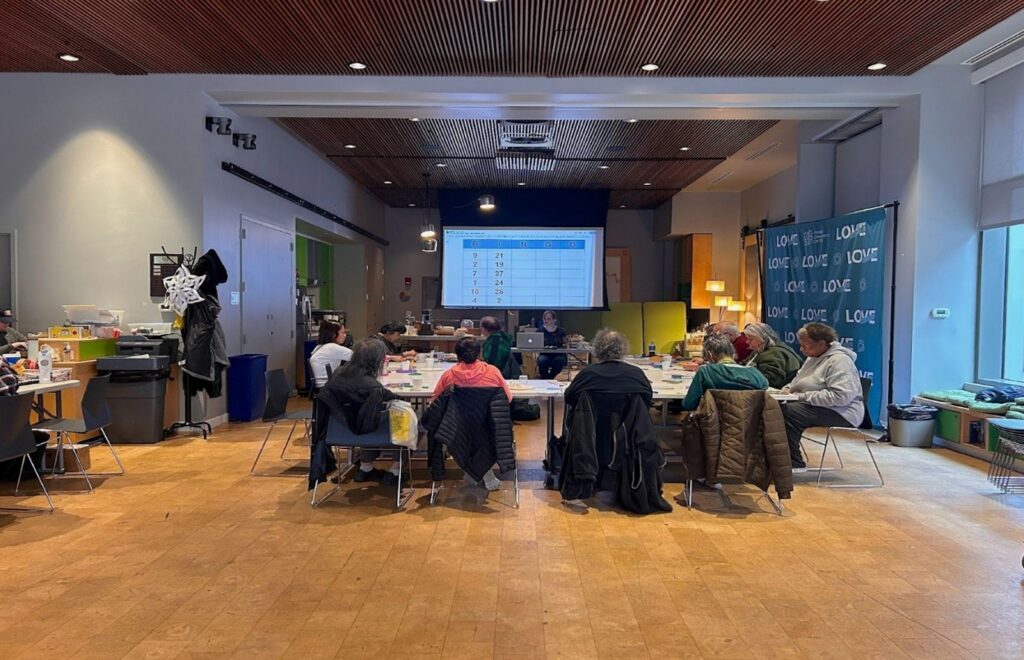“Sex as an older adult? I don’t even have time to have it, much less write about it!” That was my first thought when I sat down to write this piece. I was in the midst of responding to the tidal wave of emails that had flooded in after the U.S. Supreme Court released its decision in Dobbs v. Jackson Women’s Health, overturning Roe v. Wade and removing our right to abortion.
But, that’s part of the problem, isn’t it? Life has a way of creating priorities that, too often, don’t include pleasure, which can dampen or even erase desire, and that require our full attention and engagement. And then … well, we’re just too tired, or too stressed, or too busy to even think about sex. The physical challenges in our aging bodies don’t help much either. I have been known to offer a too-true comment that I am like a turtle. When you lay me on my back I fall asleep! Older adult sexuality is easy to marginalize because so many other things seem to take priority.
Life happens—but it happens to younger people, too, and they don’t appear to have a problem being insanely busy and sexual. Why not me? I suspect it’s because we’ve accepted the trope that for those of advanced age sex doesn’t matter as much as it does to younger people. We are sexual, sensual beings from cradle to grave and yet, at some arbitrary age, we become sexually invisible, as if our libidos and our desirability disappeared like a puff of smoke.
Repression, Denial, and Youth in Our Policy
The history of sexual policy in the United States, in general, often has been marked by repression and denial. Desire has been defined as mental illness (just look at the history of hysterectomies and circumcision), pregnancy outside of “wedlock” as a sin worthy of the torments of hell (both in life and in the afterlife), and sex for purposes other than reproduction as frivolous at best and criminal at worst.
But the story of sex in the United States hasn’t been uniformly repressive. There has been a dynamic push and pull around sexual values. From the free sex of the flower children to the daycare panics of the 1980s, from the legal recognition of same-sex marriage in the Supreme Court’s Obergefell decision to its overturning of Roe v. Wade in Dobbs, we’ve been a society in conflict around sex. But much of that conflict has centered on the experiences of young people, further reinforcing a mistaken notion that sex is uniquely an issue for the young.
This mistaken notion is reflected in many U.S. institutions, such as the medical profession. It’s the place most of us turn to when we have problems with sexual function or pleasure after, of course, we’ve thoroughly researched our questions on Google. But medical schools rarely include substantial education about sexuality as part of their training, and doctors have learned to treat diseases rather than whole people. Because of this society’s taboos around sex, medical professionals are often uncomfortable talking about sex—just as they often are talking about death. Probably not a coincidence, as both are inevitable, unavoidable elements of life.
With the pendulum of sexual regulation swinging back toward repression exemplified by the Dobbs decision on abortion, and further decisions that are likely to follow, much will depend upon the coming midterm elections and the next presidential election. Conservative voters and the local, state, and national representatives they elect, are likely to work at removing the sexual and relationship freedoms upon which many of us have come to depend.
Where will that leave the awakened individuals in their 50s, 60s, 70s, and older, who have discovered and embraced their individual sexuality? The contributions in this issue of Generations Journal address older adult sexuality. Some are based on research, some on personal experience or expertise. Whether research-based or experienced-based, there is one incontrovertible fact—adults, even older adults, are sexual beings with needs and desires too long ignored or repressed.
Facilities created to provide housing or care for older people function in a sterile world of insurance, staffing challenges, and a corporate mentality that rarely recognizes the humanity of those for whom they are responsible. But it’s not as hopeless or daunting as it sounds. Some nursing homes and assisted living facilities have established policies respecting the human right to sexual freedom. The Hebrew Home is a perfect example, discussed in greater detail by Daniel Reingold. The policy at The Hebrew Home “recognizes and respects the importance of emotional and physical intimacy without regard to sexual orientation or gender.” The policy defines sexual expression “as words, gestures, movements, or activities (including touching, flirting, proximity, and physical contact, dressing up, or reading) which appear motivated by the desire for affection, relationship, intimacy, and/or sexual gratification.
Because of society’s taboos around sex, medical professionals are often uncomfortable talking about it.
The policy goes on to outline the rights of the residents to “seek out and engage in consensual sexual expression with other residents or visitors. Residents have the right to access and/or obtain for private use, materials with sexually explicit content: books, magazines, film, video, audio, pictures, or drawings.” The policy clearly lays out the responsibility of the staff to “uphold and facilitate resident sexual expression, and the responsibility of the facility to provide comprehensive and culturally sensitive staff training and resources to the extent possible to ensure the resident’s right to privacy…”
Crafting such a comprehensive, sex-positive policy is a complicated process, and Nathalie Huitema and Maggie Syme discuss tools that will provide guidance to care organizations seeking to determine the capacity for providing consent among persons with cognitive impairment. Australia is the leading country when it comes to acceptance of sexual freedom in long-term care and Cindy Jones describes opportunities for education of care staff in ways that include patients who are LGBTQI and those with dementia—a population overlooked and ignored because of the mistaken belief that a person with dementia can’t give consent and has no need for sexual expression.
Visiting a resident in an assisted living facility a few years ago, I noticed a woman sitting on a sofa next to a man, holding hands and resting her head on his shoulder. On my next visit, the same woman was there but with a different man. I asked a staff member about it, and they told me that the first man had died, and this was her new person. She was only calm when she sat holding a person’s hand and could rest her head on their shoulder. Fortunately for this person, the staff recognized the need for physical touch—and the diversity of what that means.
Filling in Knowledge Gaps
If you’re reading this special issue, it is likely because you have an intrinsic curiosity about sexuality and aging. Why? Probably because you find yourself living in a wasteland of limited information and engagement around older sexuality. A friend of mine who lives in The Villages in Florida, the largest senior living community in the country with more than 80,000 residents, had to go to seven gynecologists before one of them asked her if she was still sexually active and was willing to discuss challenges she was having with her desired sexual activity.
It’s not all white picket fences. And it’s not all white, heterosexual people. To examine sexuality in the older population we have to move beyond stereotypes and examine a more diverse population. Stephen Duclos and Ellen Barnard each do this, Duclos looking into kink and the older population, and Barnard regarding the unique needs of the older population when it comes to sex toys. Margaret Salisu studied older Black women and their sexuality and writes of its roots in lack of knowledge about sex, and Sarah Jen takes us beyond the binaries to bisexuals and their needs in their later lives. All of these articles provide insight into a broader consideration of sexuality and aging that takes us from private bedrooms to care facilities.
I know how I see myself and the issues around sexual expression that challenge me as a 76-year-old woman, but I also tend to think of myself as the only one having the issues that plague me. Films rarely show a person my age doing much more than knitting, cooking for their younger family, or, of course, murdering someone. That image of older people created for public consumption is why Gayle Doll’s article on her film series and focus groups addressing films and how we see ourselves is particularly relevant to aging and sexuality.
Would research help this dearth of information and engagement? Perhaps. There is no question that we desperately need research to guide healthcare practice and social policy. But research alone doesn’t change the culture. As Elizabeth Wood notes, we need stories, not spreadsheets, when we want to mobilize people to address injustice. Data are a tool, but they’re not, historically, a tool that moves society as a whole. Data may be used to drive curriculum, it may be used to direct care, and it may be used to determine housing needs, but I believe it is personal stories that move people—not numbers. This isn’t an either-or thing. It’s a definite both.
‘There are many social factors that disenfranchise us from our sexual citizenship as we age.’
And here’s another thing: We can’t solve the problems of aging and sexuality if we don’t address sexual injustices earlier in life. I think that we have to increase awareness (with journals like this, podcasts, speeches, articles, with personal stories) and that awareness has to encompass our lifetimes. You can’t tell a child that it’s dirty to touch themselves, that it’s wrong to ask for things that make them happy or make them feel good, that sex itself is wrong and dangerous, and that bodies have to be hidden, and expect them to throw off those teachings at some magical age and embrace their sexuality and their bodily autonomy. The adults those children become will bring with them the lessons of their childhood. And, if they do encounter the kinds of education and social interaction that helps them throw off that oppression, we as a society should not then push them back into the sexual closet when they cross some arbitrary line and become old.
There are many social factors that disenfranchise us from our sexual citizenship as we age. When we are no longer in control of where we live, or how much we earn, we lose agency in other areas of our life as well. We are subject to the policies of organizations that may not be sexually progressive.
For the past decade my organization, Woodhull Freedom Foundation, has conducted a Sexual Freedom Summit. It was at one of these Summits that I first met and worked with Jane Fleishman. We collaborated on an entire track of all-day programs on older adult sexuality. It was eye-opening for me, exciting, and full of hope and vision for our Summit attendees—many of whom had the opportunity for the first time to talk openly about their fears, challenges, needs, and desires. As Fleishman shares in her conclusion to this special issue, the quality of our lives as older adults is directly related to healthy, consensual sexuality and sexual expression.
Hunter S. Thompson wrote in The Proud Highway: Saga of a Desperate Southern Gentleman, “Life should not be a journey to the grave with the intention of arriving safely in a pretty and well-preserved body, but rather to skid in broadside in a cloud of smoke, thoroughly used up, totally worn out, and loudly proclaiming ‘Wow! What a Ride!’ ”
Sexual freedom—it’s your fundamental human right and has no expiration date.
Ricci Joy Levy is president and CEO at the Woodhull Freedom Foundation in Silver Spring, MD.
Photo credit: ma30photography/Shutterstock













